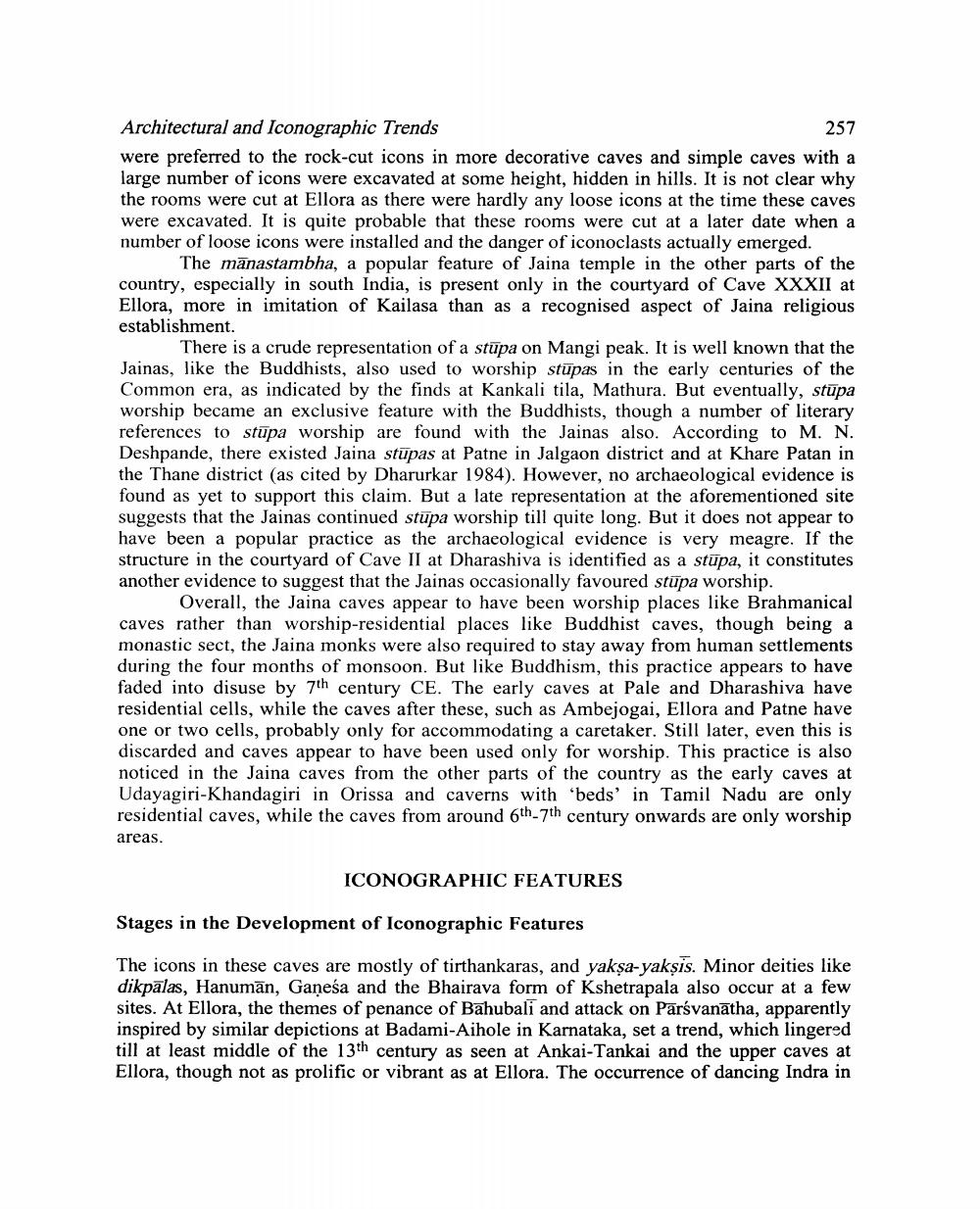________________
Architectural and Iconographic Trends
257
were preferred to the rock-cut icons in more decorative caves and simple caves with a large number of icons were excavated at some height, hidden in hills. It is not clear why the rooms were cut at Ellora as there were hardly any loose icons at the time these caves were excavated. It is quite probable that these rooms were cut at a later date when a number of loose icons were installed and the danger of iconoclasts actually emerged.
The manastambha, a popular feature of Jaina temple in the other parts of the country, especially in south India, is present only in the courtyard of Cave XXXII at Ellora, more in imitation of Kailasa than as a recognised aspect of Jaina religious establishment.
There is a crude representation of a stupa on Mangi peak. It is well known that the Jainas, like the Buddhists, also used to worship stupas in the early centuries of the Common era, as indicated by the finds at Kankali tila, Mathura. But eventually, stūpa worship became an exclusive feature with the Buddhists, though a number of literary references to stupa worship are found with the Jainas also. According to M. N. Deshpande, there existed Jaina stūpas at Patne in Jalgaon district and at Khare Patan in the Thane district (as cited by Dharurkar 1984). However, no archaeological evidence is found as yet to support this claim. But a late representation at the aforementioned site suggests that the Jainas continued stupa worship till quite long. But it does not appear to have been a popular practice as the archaeological evidence is very meagre. If the structure in the courtyard of Cave II at Dharashiva is identified as a stupa, it constitutes another evidence to suggest that the Jainas occasionally favoured stupa worship.
Overall, the Jaina caves appear to have been worship places like Brahmanical caves rather than worship-residential places like Buddhist caves, though being a monastic sect, the Jaina monks were also required to stay away from human settlements during the four months of monsoon. But like Buddhism, this practice appears to have faded into disuse by 7th century CE. The early caves at Pale and Dharashiva have residential cells, while the caves after these, such as Ambejogai, Ellora and Patne have one or two cells, probably only for accommodating a caretaker. Still later, even this is discarded and caves appear to have been used only for worship. This practice is also noticed in the Jaina caves from the other parts of the country as the early caves at Udayagiri-Khandagiri in Orissa and caverns with 'beds' in Tamil Nadu are only residential caves, while the caves from around 6th-7th century onwards are only worship
areas.
ICONOGRAPHIC FEATURES
Stages in the Development of Iconographic Features
The icons in these caves are mostly of tirthankaras, and yakṣa-yakṣis. Minor deities like dikpälas, Hanuman, Gaṇeśa and the Bhairava form of Kshetrapala also occur at a few sites. At Ellora, the themes of penance of Bahubali and attack on Parsvanatha, apparently inspired by similar depictions at Badami-Aihole in Karnataka, set a trend, which lingered till at least middle of the 13th century as seen at Ankai-Tankai and the upper caves at Ellora, though not as prolific or vibrant as at Ellora. The occurrence of dancing Indra in




